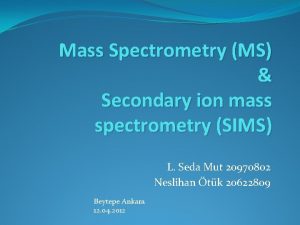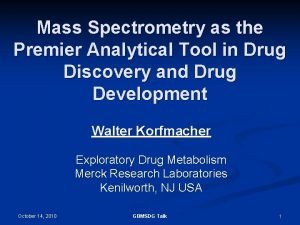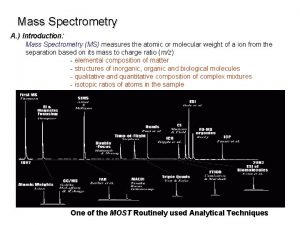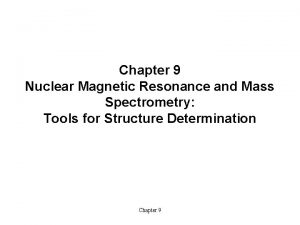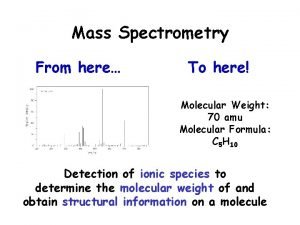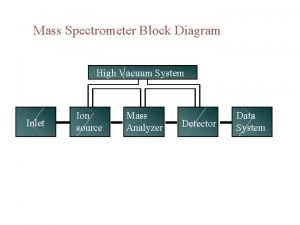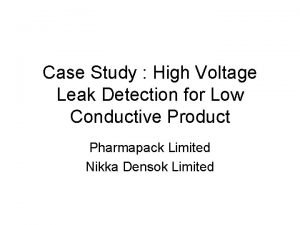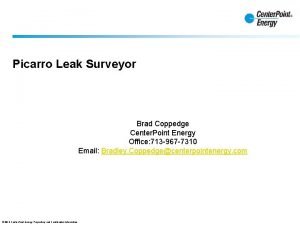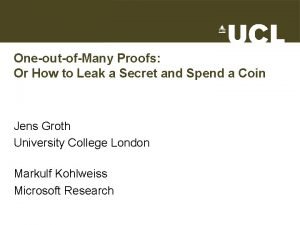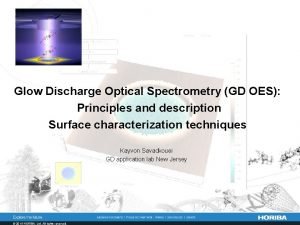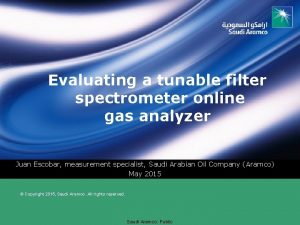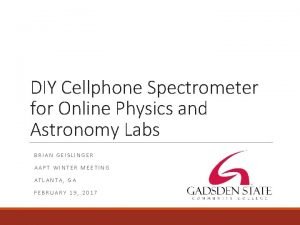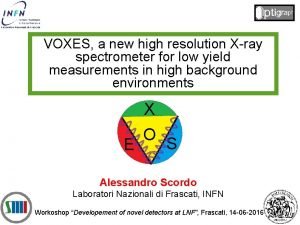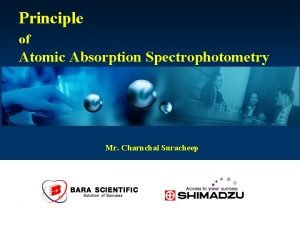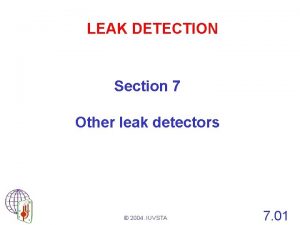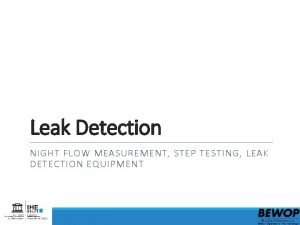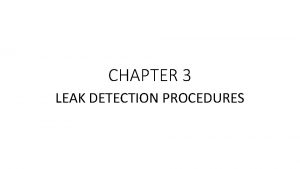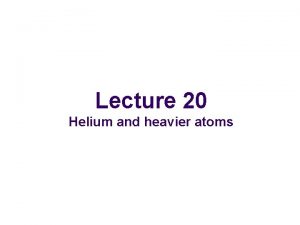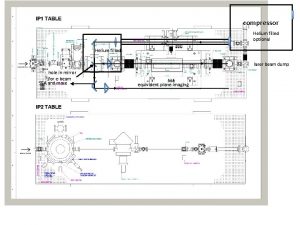LEAK DETECTION Section 4 Helium mass spectrometer leak
















- Slides: 16

LEAK DETECTION Section 4 Helium mass spectrometer leak detectors © 2004. IUVSTA 4. 01

Helium mass spectrometer leak detector Ref leak Throttle / Shut-off valve High vacuum pump Inlet valve Isolation valve Backing (fore) pump LN 2 or Cold trap © 2004. IUVSTA Inlet flange Pirani gauge Helium mass spectrometer 4. 02

Helium paths within the leak detector Throttle / Shut-off valve High vacuum pump Ref leak Isolation valve Backing (fore) pump LN 2 or Cold trap © 2004. IUVSTA Inlet flange Inlet valve Pirani gauge Helium mass spectrometer 4. 03

“Throttling” the helium leak detector Throttle valve nearly closed High vacuum pump Ref leak Isolation valve Backing (fore) pump LN 2 or Cold trap © 2004. IUVSTA Inlet flange Inlet valve Pirani gauge Helium mass spectrometer 4. 04

Compression ratio (CR) for small turbo pump with backing pressure © 2004. IUVSTA 4. 05

“Clean up” after helium leak test: 1 Throttle / Shut-off valve High vacuum pump Ref leak Isolation valve Backing (fore) pump LN 2 or Cold trap © 2004. IUVSTA Inlet flange Inlet valve Pirani gauge Helium mass spectrometer 4. 06

“Clean up” after helium leak test: 2 Throttle / Shut-off valve High vacuum pump Ref leak Isolation valve Backing (fore) pump LN 2 or Cold trap © 2004. IUVSTA Inlet flange Inlet valve Pirani gauge Helium mass spectrometer 4. 07

Mass Spectrometer Ion Source Electrons emitted from the heated filament ionise gas molecules and atoms in the ion source vacuum system. Usually, positive ions get extracted at right angles to the ionisation path, by means of a repulsive E-field, and then pass through a narrow entrance slit into a mass selector. -Electron - Ionizing collision + + Electron - - Filament © 2004. IUVSTA 4. 08

Mass spectrometer tuned for 4 He+ Total -stop Ion Source © 2004. IUVSTA Main girder carries 2 slits Detector 4. 09

Mass spectrometer mistuned: high Total -stop Ion Source © 2004. IUVSTA Voltage too high for slit Detector 4. 10

Mass spectrometer mistuned: low Total -stop Ion Source © 2004. IUVSTA Voltage too low for slit Detector 4. 11

Direct flow principle leak detector High vacuum pump Test valve Test port Roughing valve Pirani gauge High Gross Leak vacuum gauge Gross Leak path Backing Leak valve Roughing valve pump Backing (fore) pump Helium mass spectrometer © 2004. IUVSTA 4. 12

Counter-flow principle leak detector Inlet flange Inlet valve High vacuum pump Helium mass spectrometer Pirani gauge Backing pump © 2004. IUVSTA 4. 13

Designs for helium detectors • Conventional flow – The helium gas enters the mass spectrometer directly above the inlet of a high vacuum pump and sets up a pressure balance via QL=SHe x PHe • Counter flow – The helium gas passes back through the high vacuum pump from the outlet side into the mass spectrometer against the gas compression ratio. © 2004. IUVSTA 4. 14

Sniffer probes for helium detectors • Vacuum sniffer probe (usually short < 1 metre) – A low conductance tip drops the inlet pressure to permit the mass spectrometer to be operated in a fine test mode – More sensitive, may be slower than viscous flow sniffer • Viscous flow sniffer probe (often > 10 metre) – Fast gas flowing through a (very) long tube passes across a restricted leak pathway allowing some gas into mass spectrometer and some into external vacuum pump – Can utilise the backing pump of the mass spectrometer © 2004. IUVSTA 4. 15

Viscous flow & Vacuum Sniffers Viscous flow Sniffer probe Fast (viscous) flow Flow divider On Test Port Vacuum sniffer probe Slow (molecular) flow Restriction Mass spectrometer Leak detector © 2004. IUVSTA Mechanical Vacuum pump 4. 16
 Schematic diagram of a mass spectrometer
Schematic diagram of a mass spectrometer Principle mass spectroscopy
Principle mass spectroscopy Quadrupole mass spectrometer
Quadrupole mass spectrometer Matrix-assisted laser desorption/ionization
Matrix-assisted laser desorption/ionization Mass spectrometer
Mass spectrometer Mass spectrometer formula
Mass spectrometer formula Mass spectrometer block diagram
Mass spectrometer block diagram High voltage leak detection principle
High voltage leak detection principle Centerpoint energy
Centerpoint energy Secret leak detection
Secret leak detection Pawel okonski
Pawel okonski Gd oes spectrometer
Gd oes spectrometer Dispersive power of grating is inversely proportional to
Dispersive power of grating is inversely proportional to Tuneable filter spectrometer
Tuneable filter spectrometer Cell phone spectrometer
Cell phone spectrometer Xray spectrometer
Xray spectrometer Principle of absorption
Principle of absorption

